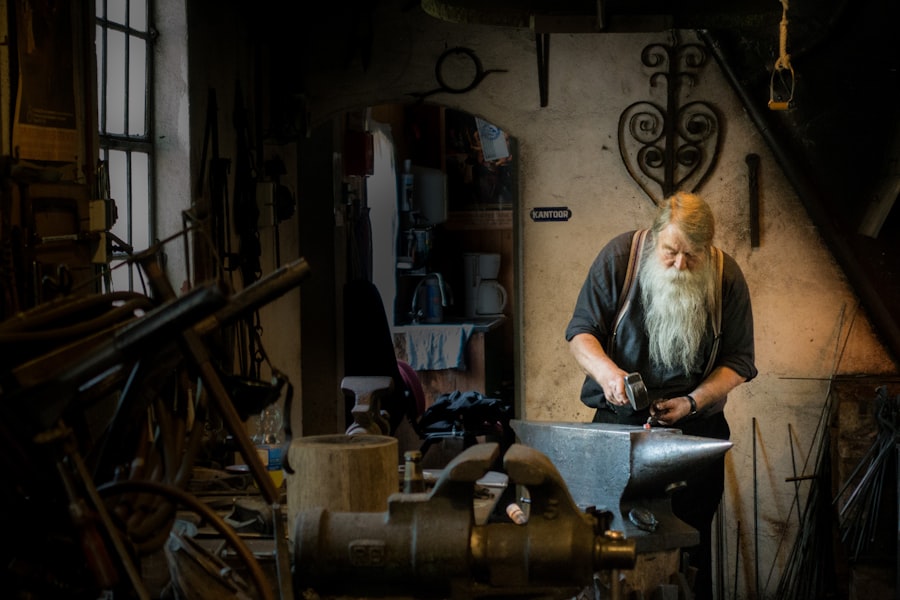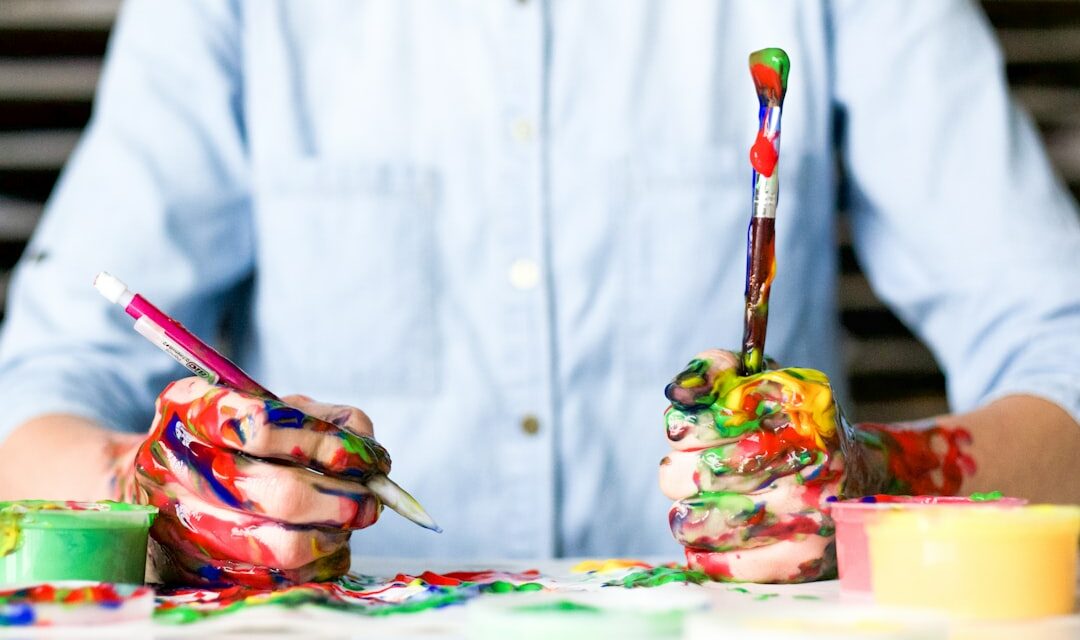Crafting is an age-old practice that transcends mere creation; it is a profound means of forging connections. At its core, crafting embodies the spirit of collaboration and communication, allowing individuals to express their thoughts and emotions through tangible forms. Whether it is knitting a scarf, sculpting clay, or painting a canvas, each crafted piece tells a story, often reflecting the maker’s experiences, aspirations, and relationships.
This intrinsic ability to convey personal narratives fosters a sense of belonging and understanding among individuals, creating a tapestry of shared experiences. Moreover, the act of crafting often invites participation from others, whether through workshops, community events, or informal gatherings. These interactions can lead to the formation of friendships and networks that might not have otherwise existed.
As people come together to share techniques, ideas, and inspirations, they cultivate an environment rich in creativity and support. In this way, crafting becomes not just a solitary pursuit but a communal activity that nurtures connections and strengthens bonds among participants.
Summary
- Crafting allows individuals to connect with others through shared creative experiences and interests.
- Building relationships through crafting involves the exchange of ideas, skills, and support within a community of like-minded individuals.
- Engaging in crafting activities can have therapeutic benefits, such as reducing stress and promoting mindfulness.
- Crafting allows individuals to create meaningful gifts that hold sentimental value and strengthen personal connections.
- Crafting provides a social platform for individuals to come together, share experiences, and build a sense of community.
Building Relationships through Crafting
The Bond Between Family Members
For instance, a mother and daughter might spend an afternoon sewing together, sharing stories and laughter as they work side by side. This shared activity not only enhances their bond but also creates lasting memories that they can cherish for years to come.
Fostering Camaraderie Among Friends and Colleagues
In addition to familial ties, crafting can also bridge gaps between friends and acquaintances. A group of colleagues might organise a crafting night to unwind after a long week at work. As they create together, they discover common interests and talents, fostering camaraderie that extends beyond the workplace. These moments of connection can lead to stronger friendships and a more cohesive team dynamic.
A Platform for Connection
Ultimately, crafting provides a unique platform for individuals to engage with one another, fostering relationships that are built on creativity and shared experiences.
The Therapeutic Benefits of Crafting

The therapeutic benefits of crafting are well-documented, with numerous studies highlighting its positive impact on mental health and well-being. Engaging in creative activities can serve as a form of mindfulness, allowing individuals to focus their attention on the present moment while alleviating stress and anxiety. The repetitive motions involved in many crafts—such as knitting or painting—can induce a meditative state, promoting relaxation and mental clarity.
This therapeutic aspect of crafting makes it an invaluable tool for those seeking solace in their busy lives. Furthermore, crafting can provide a sense of accomplishment and purpose. Completing a project—be it a handmade card or a piece of furniture—can instil feelings of pride and satisfaction.
This sense of achievement can be particularly beneficial for individuals struggling with self-esteem or feelings of inadequacy. By creating something tangible with their own hands, crafters can reinforce their sense of identity and capability. In this way, crafting not only serves as an outlet for creativity but also as a means of personal growth and healing.
Creating Meaningful Gifts through Crafting
One of the most cherished aspects of crafting is the ability to create meaningful gifts for loved ones. Handmade items carry a unique significance that mass-produced products often lack; they embody the time, effort, and thoughtfulness invested by the maker. A hand-knitted blanket or a custom-painted mug can convey emotions that words sometimes fail to express.
When individuals receive such gifts, they often feel valued and appreciated, knowing that someone took the time to create something special just for them. Moreover, crafting allows for personalisation in ways that store-bought gifts cannot match. Crafters can tailor their creations to reflect the recipient’s tastes, interests, or needs.
For instance, a scrapbook filled with shared memories can serve as a heartfelt tribute to a friendship, while a hand-painted piece of art can capture the essence of a loved one’s personality. These personalised gifts not only strengthen relationships but also create lasting memories that can be cherished for years to come.
Crafting as a Social Activity
Crafting is inherently social; it invites collaboration and interaction among individuals who share a passion for creativity. Crafting circles, workshops, and community events provide opportunities for people to come together and share their skills and knowledge. These gatherings often foster an atmosphere of encouragement and support, where participants can learn from one another while enjoying each other’s company.
The social aspect of crafting can be particularly beneficial for those who may feel isolated or disconnected from their communities. In addition to fostering friendships, crafting as a social activity can also promote inclusivity and diversity. People from various backgrounds can come together to share their unique perspectives and techniques, enriching the crafting experience for everyone involved.
This exchange of ideas not only enhances individual skills but also cultivates an appreciation for different cultures and traditions within the realm of crafting. Ultimately, crafting serves as a bridge that connects people across various walks of life, fostering understanding and collaboration.
Crafting as a Form of Self-Expression

Crafting is an exceptional medium for self-expression, allowing individuals to communicate their thoughts and feelings in ways that words may not capture. Through colour choices, materials used, and techniques employed, crafters can convey their emotions and experiences in a deeply personal manner. For many artists and hobbyists alike, the act of creating becomes an exploration of identity—a way to articulate who they are and what they stand for.
Moreover, crafting provides an avenue for experimentation and exploration. Individuals can push boundaries by trying new techniques or materials, leading to unexpected outcomes that reflect their evolving selves. This freedom to create without constraints encourages authenticity and individuality in one’s work.
As crafters embrace their unique styles and perspectives, they contribute to the rich tapestry of artistic expression that defines the world of crafting.
Using Crafting to Connect with Different Cultures
Crafting offers an invaluable opportunity to connect with different cultures and traditions around the world. Many crafts are steeped in history and cultural significance; by engaging in these practices, individuals can gain insight into the values and beliefs of diverse communities. For instance, learning about traditional weaving techniques from Indigenous cultures or exploring the art of Japanese origami allows crafters to appreciate the rich heritage behind these crafts while fostering respect for cultural diversity.
Furthermore, cross-cultural crafting initiatives can promote understanding and collaboration among individuals from different backgrounds. Workshops that focus on global crafting techniques encourage participants to share their own cultural practices while learning from others. This exchange not only enriches individual skills but also cultivates empathy and appreciation for the complexities of cultural identity.
In this way, crafting becomes a powerful tool for bridging divides and fostering connections across cultures.
The Role of Crafting in Community Building
Crafting plays a vital role in community building by bringing people together around shared interests and passions. Community craft fairs, workshops, and classes provide platforms for individuals to connect with one another while celebrating creativity. These events often foster a sense of belonging among participants as they engage in collaborative projects or showcase their work to others.
The shared experience of creating art can strengthen community ties and promote social cohesion. Moreover, crafting initiatives can address social issues within communities by providing opportunities for skill development and empowerment. Programs that teach crafting skills to underprivileged groups can help individuals gain confidence while fostering economic independence through handmade products.
By investing in local talent and creativity, communities can cultivate resilience and self-sufficiency while celebrating the unique contributions of their members. Ultimately, crafting serves as both an artistic outlet and a catalyst for positive change within communities. In conclusion, the art of crafting extends far beyond mere creation; it is an intricate web of connections that enriches our lives in myriad ways.
From building relationships to promoting mental well-being, crafting offers countless benefits that resonate deeply within individuals and communities alike. As we continue to explore the diverse world of crafting, we uncover new opportunities for connection, expression, and understanding—reminding us all of the profound impact that creativity can have on our lives.
Crafting Connections explores the intricate art technique of grisaille, which is beautifully explained in the article An Introduction to the Art Technique Grisaille. This technique adds depth and dimension to paintings, much like the detailed work seen in Andrea Mantegna’s masterpiece “The Crucifixion” from 1457-1460, as discussed in An Introduction to the Painting The Crucifixion (1457-1460) by Andrea Mantegna. Another fascinating painting that showcases intricate details is “Pyramus and Thisbe” by Niklaus Manuel Deutsch, which can be explored further in the article An Introduction to the Painting Pyramus and Thisbe (after 1523) by Niklaus Manuel Deutsch. These articles provide a deeper insight into the world of art and the connections that can be made between different techniques and masterpieces.


